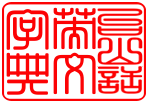 台山話英文字典 HED
台山話英文字典 HED 台山話英文字典 HED
台山話英文字典 HED
IntroductionThe pronunciation of all characters is as used by natives in the capital of Hoisan (Hoiseng; Táichéng in pinyin). Hoisanva is a spoken language. Not all of the spoken language have corresponding Chinese characters or words. All Hoisanva characters are monosyllabic. There have two parts to each syllable: an initial part and a final part. In addition to the two parts, all characters have a tone, without which would render the character/word meaningless. Listen to some sample tones. A table showing the possible combination of initials and finals is shown below. InitialsAll initials are essentially as indicated by the American English equivalents. The only exception is the initial "x" which sounds like "thl" with tip of tongue touching the inside of upper front teeth with air coming out of both corners of the mouth. The IPA equivalent is the belted l (ɬ). Many scholars may disagree with me on the initial "v" phoneme since transliterations usually use a "w" for this initial. However, if you listen carefully to native Hoiseng speakers, you will hear a "v" more than you hear a "w".
FinalsThe letters k, p, or t at the end of a word is not exploded as in American English. They are very soft, as spoken in a whisper. The iu sound is similar to the English word you or Spanish ciudad (city). Both haunt (hônt) and gone (gôn) are the preferred pronunciation in the American Heritage Dictionary, not the secondary pronunciation (hänt and gŏn). The ui sound is similar to the French huit (eight) or buoy (bōō'ē not boi). The English long vowel sounds a, e, i, and u are represented by ei, i, ai, and iu respectively. There is no long o sound.
* This long o starts like the American English o but ends with the lips together, not open as in American English. TonesHoisanva consists not only the initials and finals that make up the word, but also a tone, which is an integral part of the word. There are five distinct tones in Hoisanva. Pitch or tone contour can be divided into a starting pitch and an ending pitch. By using the numbers 1 through 5 to represent the five tones (see table below) in a pentatonic scale (where 1 is low and 5 is high), we could approximate the pitch of words in Hoisanva. Diacritic marks (see table below) are used to represent the five tones. A macron (ˉ) is used for the first tone. A diaeresis (¨) is used for the second tone. A tilde (˜) is used for the third tone. A grave accent (ˋ) is used for the fourth tone. A circumflex (ˆ) is used for the fifth tone. Diacritic marks are placed over a vowel if there is only one vowel in the word. In the case of diphthongs, diacritic marks are placed over the first vowel, except for "ui" and "iu", in which case, it is placed over the second vowel.The consonant "M" or "m" as a single character/word may have a diacritical mark placed above it. See chart below.
Tonal changes exist for all tones except the first (high even) tone. The second (middle even) and third (low even) tones start with the normal pitch and then half way through the sound rises and ends with a high pitch. The fourth (middle falling) and fifth (low falling) tones start with the normal pitch and half way through the sound dips and rises and ends with a high pitch. All four tonal changes will be marked by a slash (/) after the word. For example "òi/" (a bag, to pocket). Tonal changes exist when a person's name is called except if the person's name is the first tone (high even), in which case, "ä" is added to the name at the end. However, "ä" can be added to any name in any tone. "Ä" can also be added before a person's name. Tonal Change Examples:
Sample Tones
+ uncle: a paternal uncle who is older than your father Table of Possible Combinations of Initials and FinalsInitials are arranged across the top and bottom rows. Finals are arranged down the left and right columns. Combined initials and finals are in the grid. Blanks indicate no such combination in Hoisanva. The finals "eik" and "eit" are almost indistinguishable since the final k and final t are even softer than the normal final k and final t. I have arbitrarily chosen "eik" over "eit" to represent these sounds. |
||||||||||||||||||||||||||||||||||||||||||||||||||||||||||||||||||||||||||||||||||||||||||||||||||||||||||||||||||||||||||||||||||||||||||||||||||||||||||||||||||||||||||||||||||||||||||||||||||||||||||||||||||||||||||||||||||||||||||||||||||||||||||||||||||||||||||||||||||||||||||||||||||||||||
|---|---|---|---|---|---|---|---|---|---|---|---|---|---|---|---|---|---|---|---|---|---|---|---|---|---|---|---|---|---|---|---|---|---|---|---|---|---|---|---|---|---|---|---|---|---|---|---|---|---|---|---|---|---|---|---|---|---|---|---|---|---|---|---|---|---|---|---|---|---|---|---|---|---|---|---|---|---|---|---|---|---|---|---|---|---|---|---|---|---|---|---|---|---|---|---|---|---|---|---|---|---|---|---|---|---|---|---|---|---|---|---|---|---|---|---|---|---|---|---|---|---|---|---|---|---|---|---|---|---|---|---|---|---|---|---|---|---|---|---|---|---|---|---|---|---|---|---|---|---|---|---|---|---|---|---|---|---|---|---|---|---|---|---|---|---|---|---|---|---|---|---|---|---|---|---|---|---|---|---|---|---|---|---|---|---|---|---|---|---|---|---|---|---|---|---|---|---|---|---|---|---|---|---|---|---|---|---|---|---|---|---|---|---|---|---|---|---|---|---|---|---|---|---|---|---|---|---|---|---|---|---|---|---|---|---|---|---|---|---|---|---|---|---|---|---|---|---|---|---|---|---|---|---|---|---|---|---|---|---|---|---|---|---|---|---|---|---|---|---|---|---|---|---|---|---|---|---|---|---|---|---|---|---|---|---|---|---|---|---|---|---|---|---|---|---|---|